Most cats can eat throughout the day if you give it a continuous flow of foods. Cats love eating, and they never get tired of it. However, you might come across a situation when your cat is no longer craving for food. It usually happens with sick cats; they don’t eat when they aren’t physically fit.
The thing that made you worried is that the cat isn’t eating much but acting normal, doing daily activities without any tiredness, as if nothing is going wrong whatsoever.
I also had been gone through the situation with my cat as well. At first, it was confusing to me; but, later on, I figured out the reason and found ways to deal with the situation.
If you are concerned about this sudden change in your cat, you are in the right place. I will discuss why it happens if there is any risk associated with it, and how to get your cat to eat during that time.
The Term Associated with It
When your cat finds no interest in foods and doesn’t eat for 24 hours no matter what you give, in most cases, the state is known as loss of appetite. The condition is referred to as anorexia according to the medical terminology.
Just like us, cats lose their appetite from time to time. This can happen without any reason, as well.
What Are the Reasons Behind Loss of Appetite?
Although the condition seems like an illness, in many cases, it’s a non-medical concern. However, there are both medical and psychological reasons why cats don’t eat.
1. Psychological Issues
It triggers problems when there are sudden changes in the cat’s day to day routine, habit, and activities.
◼ Introduced to New Foods
Cats love to eat. That doesn’t mean your feline will eat anything you try to feed. When you introduce the cat with new food or bring any change to the regular meal, it’s evident for the feline to stay away from eating.
If someone regularly feeds dry food to the cat since birth, and all of a sudden, the person wants the cat to eat wet food, it will not work. The cat is unlikely to recognize anything except dry food. Similarly, if a kitten doesn’t eat mice, later on, when it gets adult, it will not acknowledge the mouse as a food.
To get your cat used to the new diet, consider mixing the new food with older ones in a small amount. You can gradually increase the amount if the feline finds it interesting.
◼ New Environment or Home
Cats’ appetite changes due to sudden changes in the environment as well. If your cat isn’t eating properly since you moved into a new house or a new person moved in, or a person is visiting your place often, all these changes can be responsible for the cat not to eat.
Adding new furniture or changing interior decoration also affects cats’ appetites. Even if you bring any schedule change in meals, your cat can feel less interested in eating the food at that new time.
◼ Other Pet
This happens a lot to cat owners. When someone brings a second cat to the home, the older one can lose its appetite for eating. In many cases, when cats feel afraid of other pets such as dogs, senior cats, it affects regular eating habits too. Such a condition put the cat under stress; as a result, it refuses to eat for a certain period.
The reason can be your newborn baby too. When you bring the infant in the house, your cat’s mood can be changed too. Also ifs there is a new guest in the house, and the cat doesn’t like him/her, it can change your cat’s mind towards taking regular meals.
◼ Stress
You can link the stress issue with the previous two reasons that I just mentioned. There are several reasons why cats go through a stressful state.
Sudden changes in daily activities, schedule, environment, sources of fear, new or bad experience, a new pet, a new baby, your absence, confinement, illnesses, lack of activity, and many more issues can cause stress in cats. Stress affects cats in both ways; it can increase or decrease appetite.
You will be amazed to know that even when you, as an owner, get sick, it also affects your cat. It happened to me several times. I used to have several and unbearable abdominal pain due to gastric.
My cat understood what I was going through and mourned in front of my mother. It didn’t demand food like it usually did during meal times.
◼ Travel and Unfamiliar Environment/Surroundings
Cats are very habitant creatures. When you force a cat to change its routine, this will increase the stress, which eventually results in loss of appetite. Also, when you are taking your feline with you and travelling by car or plane, the journey will cause motion sickness in the cat. It’s another reason why your cat refuses to eat.
◼ Wrong Food Bowl Location
This might sound strange, but the location of the food bowl does matter too. It mostly happens if the owner has more than one cat or other pets. The cat has to pass through places where another cat stays and bullies the first one.
Similarly, when the first cat approached the bowl, another one stares at the cat aggressively. This makes the cat go for the food later. Also, when the bowl is close to another pet, which the cat is afraid of, it decides not to get close to the bowl.
If you place the bowl near things such as a vacuum cleaner or washing machine that makes scary sounds, the furball will rarely go there during mealtime.
So, the location to reach the bowl shouldn’t have any sources of fear, and there shouldn’t be any other cat or pet to bully it, as well. Place the bowl in a closed space or free feed in several locations.
Also, make sure the bowl isn’t close to litter or water box. This is because cats don’t eat where they relieve themselves.
◼ Inappropriate Food Bowl
Cats don’t like their whiskers to get touched with anything. When you give cat food in a deeper bowl, the whiskers contact the edges. It can also make the cat stressful and uncomfortable. Use proper size bowl or consider serving meals in plates.
◼ Medicine into the Bowl
When it’s about deworming your cat, mixing the medication with the food is the best way to feed the medicine. As cats have a super-powerful sense of smell, and they always check before eating.
If it smells medication in the food, your cat will refuse to eat. And, if you need to pill the cat daily, consider giving it with treats. There are treats, especially for this purpose. Don’t mix medications with your cat’s regular and primary diet.
◼ Cats are Stubborn
Like humans, cats are very picky eaters, and sometimes they refuse to eat for no real reason. When you serve the food, if it doesn’t like, or the meal is too cold/old/stale, or the bowl isn’t cleaned, the cat will not eat.
2. Medical Issues
Some medical issues also contribute to this loss of appetite problems in cats. However, not all cats that don’t eat for days are affected by diseases.
◼ Dental Disease
One of the most common reasons why cats refuse to eat is due to the dental issue. If the oral health of the cat is infected, or have any inflammatory disorders, the cat feels pain while chewing foods, which prevents it from approaching foods.
Toothache, inflamed gums, injured mouth, abscess, etc. are the most commonly associated dental disease with loss of appetite.
◼ Gastrointestinal Disease
When your cat goes through gastrointestinal diseases, it will not feel good during or after eating; this makes the feline less interested in food. Things that are responsible for GI are –
- Parasites
- Gastroenteritis
- Colitis
- Pancreatitis
- Foreign bodies in the stomach
- Changes in the intestines
- Cancer
Your cat will have diarrhea, vomiting, constipation, and it will lose significant weight as well. A proper diet cannot resolve the matter. You must consult a vet to further diagnosis and treatment. Only then, a balanced diet will help to assist in making things easy.
◼ Kidney Disease
Older cats are commonly affected by kidney disease. Similar to GI, having kidney issues also causes nausea in cats. They don’t eat, not up to treats, desserts, or anything you try.
If an old cat is not eating for a few days, probably it has to do with the kidney. It is a fatal condition, and proper treatment should start suggested by a vet as soon as possible.
◼ Recent Vaccination
Although vaccines are a lifesaving way to treat animals, it also brings some issues as well. One of the common side effects of vaccination is that animals refuse to eat; that is because of the adverse reaction.
If your cat loses its appetite, there is no reason to worry. It’s temporary, though; the furball will shortly come back to the track within a day or two.
◼ Digestive Problems
When the digestive system is unable to function properly or any part of it is malfunctioning, it makes the cat feel sick that results in avoiding food. Foreign body particles in the stomach, inflammation, tumors, gastrointestinal tracts, etc. are the most common reasons for the digestive issue.
◼ Purging of Immune System
Some illnesses, infections, and inflammations make the immune system common for purging the body. When this happens, the cat suffers from diarrhea and vomiting, accompanied by loss of appetite. The same thing happens to us as well; when we are sick, foods don’t appeal no matter what is served in front of us.
What to Do When the Cat Has Stopped Eating?
If your cat isn’t eating due to some psychological issues, here are few useful things to try –
1. Make Sure the Food Is in a Good State
Before serving the food, make sure the food isn’t expired. Some canned foods tent to accumulate mildew and your cat will not come even close to it. Also, they don’t like stale diets. If you use a container, be sure to keep it always closed to keep the food clean.
2. Try Foods of Different Brands
If you want the cat to get used to with foods of other brands, buy a small portion first, and see if the cat likes it or not. Give a small portion at first, if the feline likes that, increase the portion eventually.
In this way, you can save money and avoid food wastage as well. This is the way to approach your cat when you are to introduce a variety of food in its diet. If the cat has stopped eating wet food, consider introducing it dry food and vice versa.
3. Change the Variety and Type of Food
When you must feed your cat one particular type of nutritious food, and it feels no interest in it, consider buying the wet variety of that food.
If the cat is going through treatment, it would be best if you take note of how the cat is responding to the given foods. Later, you can easily show it to the vet. The doctor might suggest you prepare meals at home, giving you the instructions regarding ingredients and portions.
4. Try Feeding at Different Times Throughout the Day
If your cat likes the wet or dry variety of a particular food, and suddenly stops eating again, consider giving the meal at different times. Cats sometimes don’t eat due to the time factor. Notice when your furball eats. They usually eat at the same time, so be sure to keep up with the schedule while following the same pattern.
5. Make It Feel Comfortable
The place where the cat takes regular meals shouldn’t be around anything that it is afraid of. Also, make sure the bowl is clean, and it’s not close to the litterbox. When you ensure these simple things, the feline will feel comfortable, which will help it to get used to the foods again.
6. Don’t Allow the Cat to Starve
If the cat is not eating, make sure the cat doesn’t starve. Don’t even allow it in the first place. Cats that don’t eat more than two days have a high chance of damaging the internal organs pretty severely. Switch to the previous menu if it’s not up to the newer one. Introduce new foods gradually.
7. Add Something Delicious Over the Food
What’s the food that your cat falls for every single time? It can be smelly grated cheese or small chunks of meat. Add these on the menu, and serve in front of the cat. You can try some cat food additives made of tuna and sprinkle some amount over the food. The food will look more appealing to the cat.
8. Feed It with Your Hands
If your kitten refuses to eat, then you are in charge. Take a tiny portion of the food and feed it directly with your hands. You need to try this in the same way with adult and older cats as well. If your cat wants your attention, and that’s the reason why it’s not eating, this trick will work like a charm and build a better relationship, as well.
Cats are well-known for being stubborn and finicky; so, don’t freak out if the cat has stopped eating. Always go with the easiest solution to resolve the matter and avoid headaches.
9. Consider Playing with the Cat
Sometimes, all your cat wants is your attention. As soon as you notice the feline isn’t eating, spend some time and play with it. Once the cat responds to it, keep engaging to play with it.
When the cat is tired, it will walk away and head towards the food, and if it doesn’t, then bring the bowl to it; if nothing changes, give it a small portion from your hand.
10. Consider the Temperature of the Food
If the cat is drinking water but not eating, the food temperature might be the issue here. Make sure the food isn’t cold. A cat that is used to eat warm wet food won’t show any interest in cold meals.
When the food is warm and hot, the scent moves quickly around, and the cat can smell even better. Cats love foods that have a stronger and appealing scent. So, even if you serve something that it likes, but it’s cold, the cat will not feel interested in eating that.
For canned food that you take out of the refrigerator, consider pouring some boiling water on it to make it smelly. You can also heat it up a bit; make sure you don’t make soup out of it. Foods of average body temperature are favorable to cats.
You can avoid this temperature issue once you notice the cat is lolling around you during feeding time. Also, be sure to check the bowl from time to time, whether it has started eating or not.
11. Maintain the Limit
Just like humans, the metabolism of every cat isn’t the same. You might think the cat hasn’t eaten enough, but in fact, it has reached its limit. Just because the cat is not getting fluffier and bigger, that doesn’t mean you need to overfeed it. You need to determine the limit correctly.
Some owners complain about the limited appetite of their cats. But, in reality, their cats are eating enough food as per their ability and requirement.
12. Use Treats or Supplements
Cats love treats. There are some brands that make treats only for this purpose. Whether the cat stopped eating dry food or wet, try giving it treats. You can try both dry and wet treats. Dry mostly works; but, it’s not worth the try if your cat isn’t up to dry foods. If the cat is acting to be a bit finicky, it will fall for the treat.
As far as giving supplements are concerned, you need to ask the vet about what medication you are about to give. The vet might also suggest some foods to give with the supplements.
These medications will provide the necessary nutrients to keep it healthy and reduce the damage of nutrition deficiency.
13. Give Some of Your Food
There are some items in your diet that the cat always finds interest in. If this is the case, you can try giving it some of your own meals or mix with the cat food. And, if this clicks, gradually increase the amount of cat food.
14. Kitty Massage
Numbers of people complain stating, “my cat is lethargic and not eating.”Cats with lethargy, lose appetite of eating. So if you have a lethargic cat, give it a good rundown. The massage will boost the blood circulation and make it hungry.
If your cat has recovered from any illness recently and still moping most of the time, this is the way to stimulate the appetite again.
15. Groom the Cat
Cats that lost appetite often don’t feel like grooming themselves. This is where you can help the poor fella as well. Give your cat attention by trimming the nail, brushing the hair, and cleaning ears. All these stimulations probably will make it hungry again.
16. Remove Medications from the Food
As cats have a strong sense of smell, they can smell the medication that you hide inside the food. It can be the reason why your cat is drinking a lot of water but not eating. If this is the case, serve the food without hiding any medications inside it.
Ask the vet to give a different form of medication, or you can try other ways to feed the cat.
How to Prevent Loss of Appetite in Cats?
The reasons cats stop eating are usually due to some activities or actions if there is no health issue associated with it. Therefore, preventing the reasons in the first place can prevent cats from eating less.
Keep in mind that following prevention and precaution will do little help to combat loss of appetite, but these will surely reduce the psychological issues related to the cat not eating much.
- If you are to change the cat’s diet, don’t rush and do it gradually by mixing with currently running foods.
- For medical reasons, introduce medications with food exclusion trials.
- As soon as you notice any vomiting or loss of appetite issue, return to the previous/original diet asap.
- Take proper measures to reduce stress in cats so that it feels more secure. If you are moving somewhere else, or there’s someone to arrive at home, use pheromone plug-ins as it helps to some extent.
- Arrange a safe and enclosed area for the cat. If you notice the cat eating less or not eating food at all, serve the meal in that enclosed area.
- It mostly happens with new kittens. If you notice the kitten is not eating much or not eating at all, it’s probably under stress and needs some private space. The same thing goes with the new cat, not eating as well.
- Regular check-ups can identify any dental issue in feline, which is the most common reason why a cat is not eating food. Give annual vaccines to protect the pet from diseases that can cause loss of appetite.
When to Visit the Vet?
If your cat doesn’t eat for an entire day but drinks water, it will not be a huge problem. However, if the cat is on its 2nd day without eating anything, this is when you need to worry. If you find the cat vomiting white foam and not eating, you need to visit the vet soon.
As it goes with kittens, if it’s more than one day, you need to go to the vet. If the kitten is vomiting and not eating as well, it requires emergency care, which will be suggested by a vet.
When it passes two days, there’s something wrong with your feline health. Don’t consider it as a psychological issue any longer. It might feel hungry and approaches the food, but for some reason, it gives up and turn away from food.
Clinical examination is a must for these cases. The vet will ask of your observation at home; so, taking note would be helpful in this regard. Also, the cat might need to go through multiple blood tests, urine tests, ultrasound, and x-rays to identify the problem.
Things You Need to Keep in Mind
If the cat doesn’t eat for a day but drinks water, it will keep the cat well-hydrated. It can survive a few days, but you shouldn’t rely on water and sit back in this situation.
If there is nothing wrong with the health, your furball will start eating anytime soon. However, cats that don’t eat or drink for 24 hours, there is a high chance of developing a Hepatic Lipidosis issue, which requires immediate hospitalization.
Whenever you are out with the cat for walking, make sure it doesn’t consume foreign body parts such as plastics, cloths, etc.; these are the foods cats should not eat.
If you are out for travelling, make sure you keep foods that are familiar with the cat.
Final Words
There can be either psychological or medical issues responsible for not having an appetite. Our favorite pet not eating much, but acting normal mostly has to do with some psychological factors. Try things that are mentioned above to make the cat eat. Ensuring a friendly, scare-free environment is crucial to deal with the condition.
If you tried all the above suggestions, and the cat still not showing any sign of increasing appetite, then it has to do with the health issue.
Go to a vet when it’s over 24 hours of starvation. The vet will take the record and do examinations to determine the problem first, and then prescribe medications and treatments to deal with the disease.

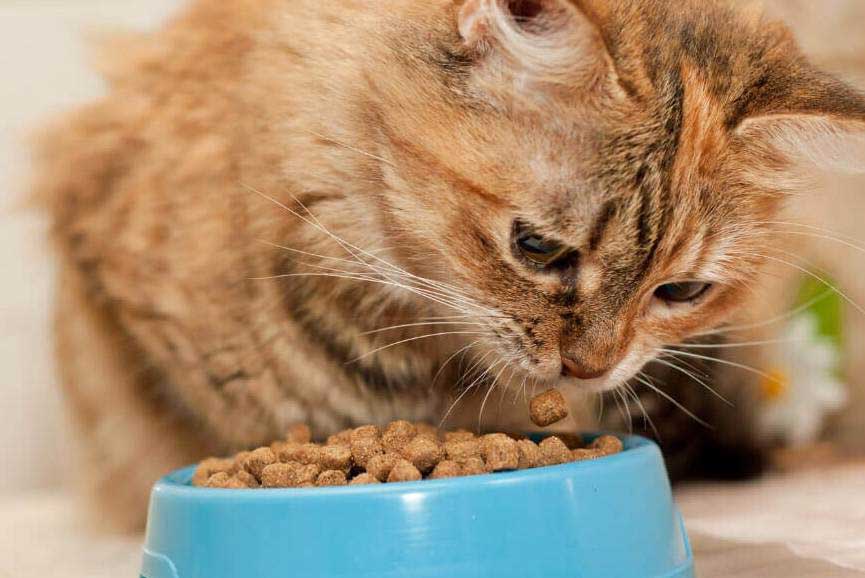
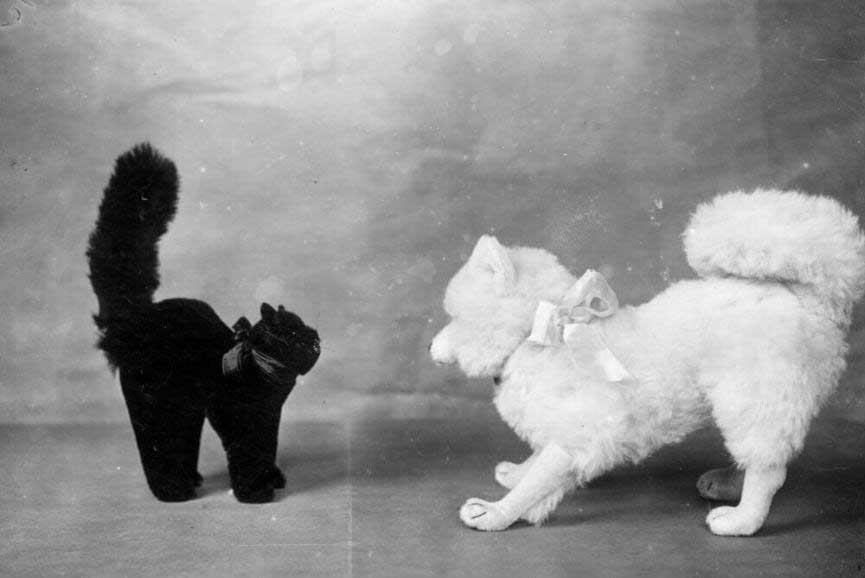


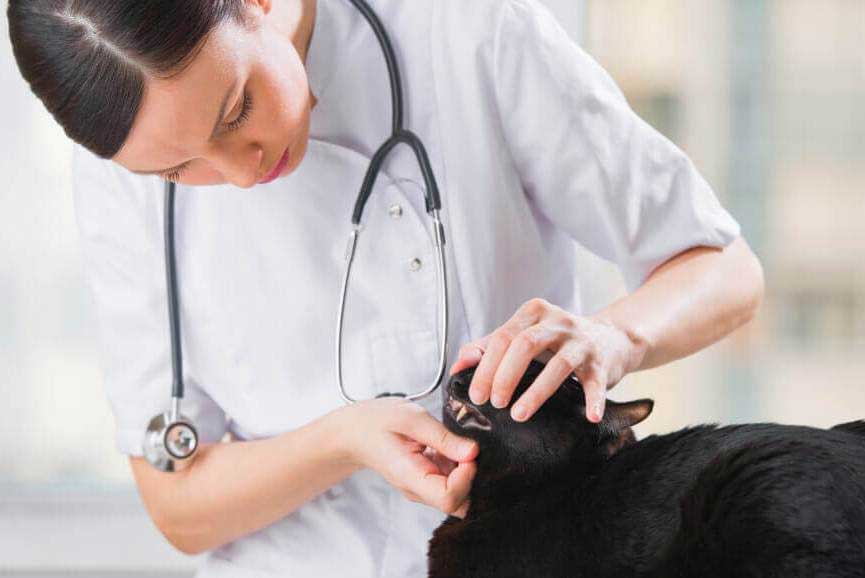


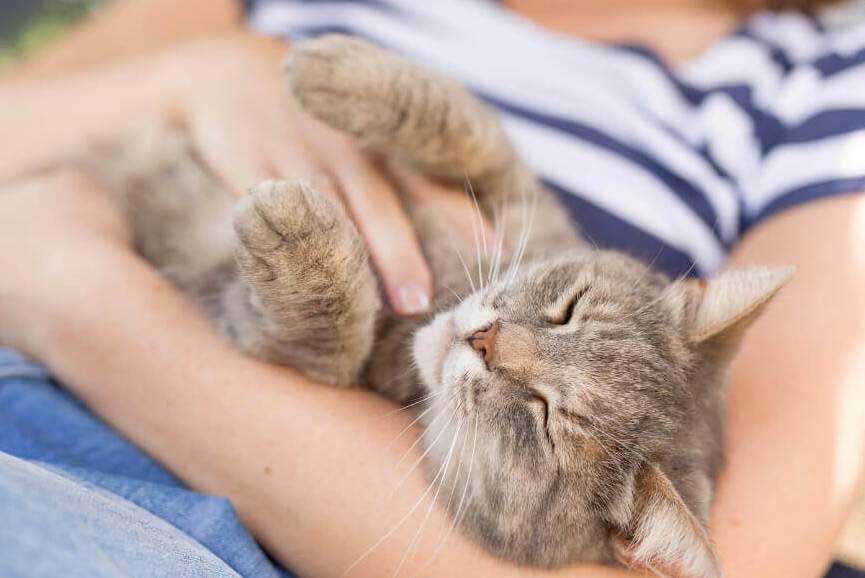
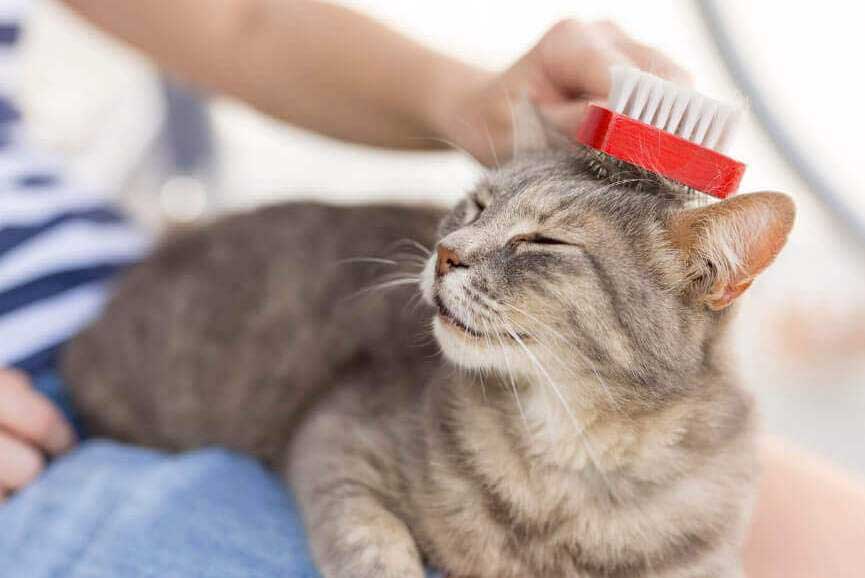
My Baby is 16 1/2 yrs old. She is just showing signs of her hind legs buckling some but she still can get around . It has just this last week gotten very hot outside and she loves to go out & lay on our 4th floor balcony. To me its way too hot, but she loves it. I let her be out there for 30-45 min. She is drinking water but not interested in her raw food that she has eaten for almost 3yrs. Usually chomps it down. Does NOT want it at all. She on the other hand wants whatever i am eating tho. I also get her Dr Martys freeze dried all natural food, and i have been letting her just eat the pellets. I use to mix the two foods together, they are both expensive. But she just doesnt seem hungry. Could it be the heat even tho its cooler in the apt?? She sleeps under my futon which i have a cover over so its like a tent for her haha. She seems ok but not really interested in doing much. Shes mad today because its about 95 and i wont let her out on the balcony. Toooooo hot.